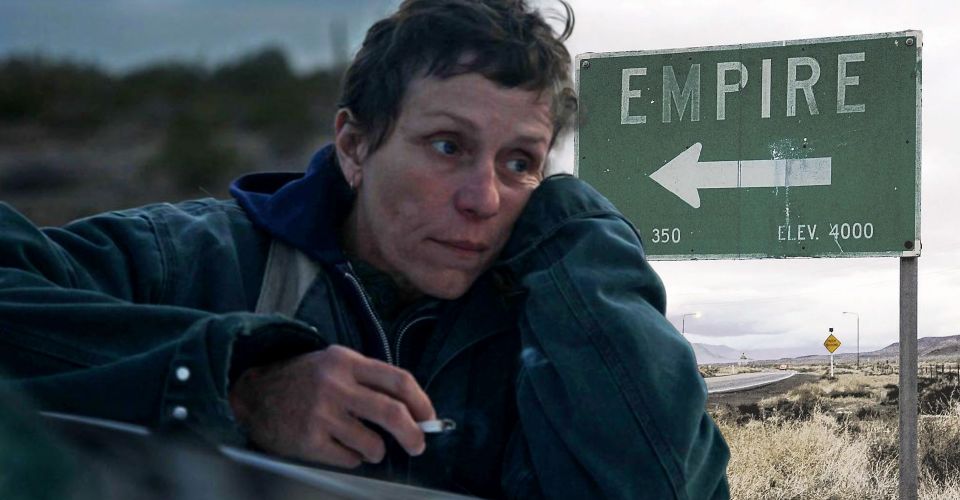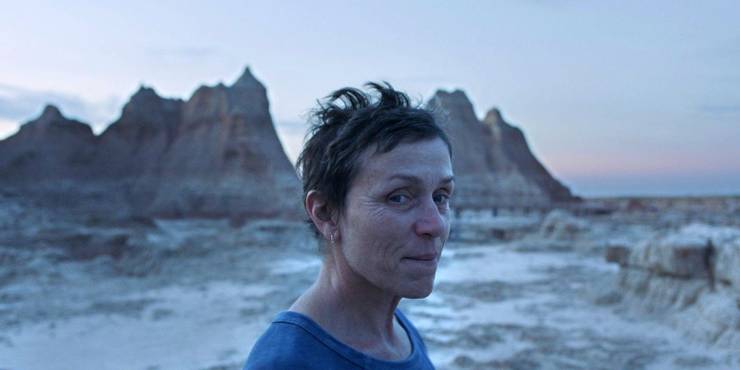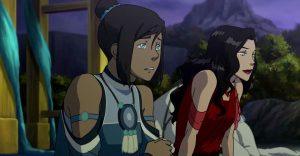Nomadland True Story: Is Empire, Nevada Real? What Happened To The People

The events of Chloe Zhao’s Nomadland spiral outward from the closure of the United States Gypsum plant in Empire, Nevada – raising the questions of what actually happened there. As a result of the plant’s closure, the town of Empire disappears as well, with even its ZIP Code vanishing into thin air. Is Nomadland inspired by true events? If so, what happened to the people of Empire?
Nomadland stars Frances McDormand as Fern, who decides to become a nomad after losing her job and her home in Empire. While the film ostensibly tells Fern’s story, it nearly operates as a documentary. McDormand is one of two Hollywood performers in the film, alongside David Strathairn. Every other actor in the film is an amateur, playing a fictionalized version of themselves. The film, therefore, blurs the line between fact and fiction, and asks McDormand, above all else, to simply sit and listen as these real-life people share their experiences with her.
Nomadland engages with the real world in a number of ways. The film takes place in 2012, and even references the MCU’s release of The Avengers that year. The art of vandwelling is also a very real thing, as is Bob Wells, who continues to pioneer the nomadic lifestyle to this day. Importantly, the sudden disappearance of Empire, Nevada is also very real, as is the impact of the town’s disappearance on the people who lived there.
Empire, Nevada in Nomadland

At first, the town of Empire is referenced only in the opening title cards of Nomadland. Before even meeting Fern, viewers are told about the closure of the US Gypsum plant, which had been in Empire for 88 years, on January 31, 2011. By July, the film notes, the Empire ZIP Code was discontinued. Zhao provides the audience with these facts from the outset so as to establish Nomadland as a very real story. Granted, it is not a true story; Fern’s journey and her dialogue are still scripted. But Nomadland does flirt with a certain sense of realism rarely seen in similar films, and it does interpret the real experiences of Empire’s former residents.
Fern visits her former home near the end of the film, walking through the barren streets before finding her old house and navigating its decrepit interior. She wanders towards her backyard, which she had previously described as vast and open. It still is, although the grass is now dying and the people are gone. Fern’s return offers her closure, but also a stark reminder that there is nothing left for her or anyone else in Empire. She then returns to her van and hits the road once again.
What Happened To Empire, Nevada & Its People In Real Life

The real-life town of Empire sat in northwest Nevada, covering 5.1 square miles. It was an incredibly small town, with a population of just 217, according to the 2010 census, although it was estimated to be as high as 800 in years prior. As a company town, Empire saw the entirety of its residents work for the US Gypsum Corporation. Gypsum was the rare element to remain “essential” post-World War II, making the US Gypsum plant one of a few nationwide to survive the rapid decline of mining at that time. Still, the recession in the late 2000s proved too burdensome, causing the plant, and therefore the town, to close.
Empire sits far away from any nearby town. The closest town is Nixon, Nevada, which is still over 100 miles away. Reno is the closest city of note, as both Empire and Reno are in Washoe County, perhaps familiar to fans of popular comedy series Reno 911! Empire did benefit from tourism to a certain extent, as the nearby Black Rock Desert invited recreationists. The desert is also home to Burning Man Festival. Still, Empire relied on its central gypsum plant above all else, as US Gypsum ran the company town. As recently as 2016, only seven citizens remained, with little more than a convenience store and a few trailers keeping the real-life ghost town alive. In the summer of 2016, Empire Mining Co. purchased the town, only partially reopening it and employing some of the remaining residents.
The Real Life Nomads Fern Meets in Nomadland

Fern’s journey in Nomadland is an appropriate stand-in for the broader experiences of those affected by the Great Recession in the United States, but it is all the other characters Fern meets throughout the film who truly speak to the toll that the recession took on so many Americans. Actresses Linda May and Charlene Swankie play Linda and Swankie, respectively. They are playing fictionalized versions of themselves, but much of what they share with Fern is entirely true. Swankie may not have been diagnosed with cancer as she suggests in the film, for example, but Swankie is a real-life nomad, and the survival skills she imparts upon Fern are derived entirely from her own real-life experiences.
As Fern, Frances McDormand, who won an Oscar in 1997 for Fargo and again in 2018 for Three Billboards Outside Ebbings, Missouri, is tasked with listening to those around her. McDormand’s performance is one of 2020’s best, but her presence does threaten to undermine the very foundation of Nomadland at times. There is no escaping McDormand’s status as an actress, whereas almost everyone else in the film is a true nomad. McDormand offers enough authenticity and compassion to warrant her involvement, but Nomadland is undoubtedly at its strongest when it is speaking to the real-life struggles of real-life nomads like Linda and Swankie.
What Nomadland Gets Right About America & Nomads After The Recession

Although more than a decade has passed since the Great Recession wreaked havoc on so many Americans, there have been few attempts to historicize it thus far. Films like The Big Short explored the crisis from a financial perspective, but there has been little effort to document the experiences of everyday Americans, and Chloe Zhao seems to get that. With Nomadland, Zhao is correcting course, highlighting the all-too-real struggles of real-life nomads in the wake of the Great Recession. Nomadland recognizes the sliding scale of the recession’s impact, offering just as much compassion to a dilapidated movie theater as it does towards the thousands of Americans put out of work.
Zhao also expertly navigates the disappearance of a town like Empire, Nevada. On one hand, Empire’s disappearance is devastating for all the families who had built their lives there. But Zhao is also wise to question the very notion of a company town. Nomadland is willing to ask why the United States would allow an entire town to be run by a corporation, or why the government would allow for an entire town to be wiped off of the map just because a single corporation could no longer function there. Zhao’s film is compassionate, but it is also angry, realizing the frustrations of its characters. As the Great Recession moves further and further away in time, films like Nomadland will only become more crucial in their ability to highlight how one of the most economically devastating events in American history continued to rear its ugly head in the decades that followed.
About The Author


















